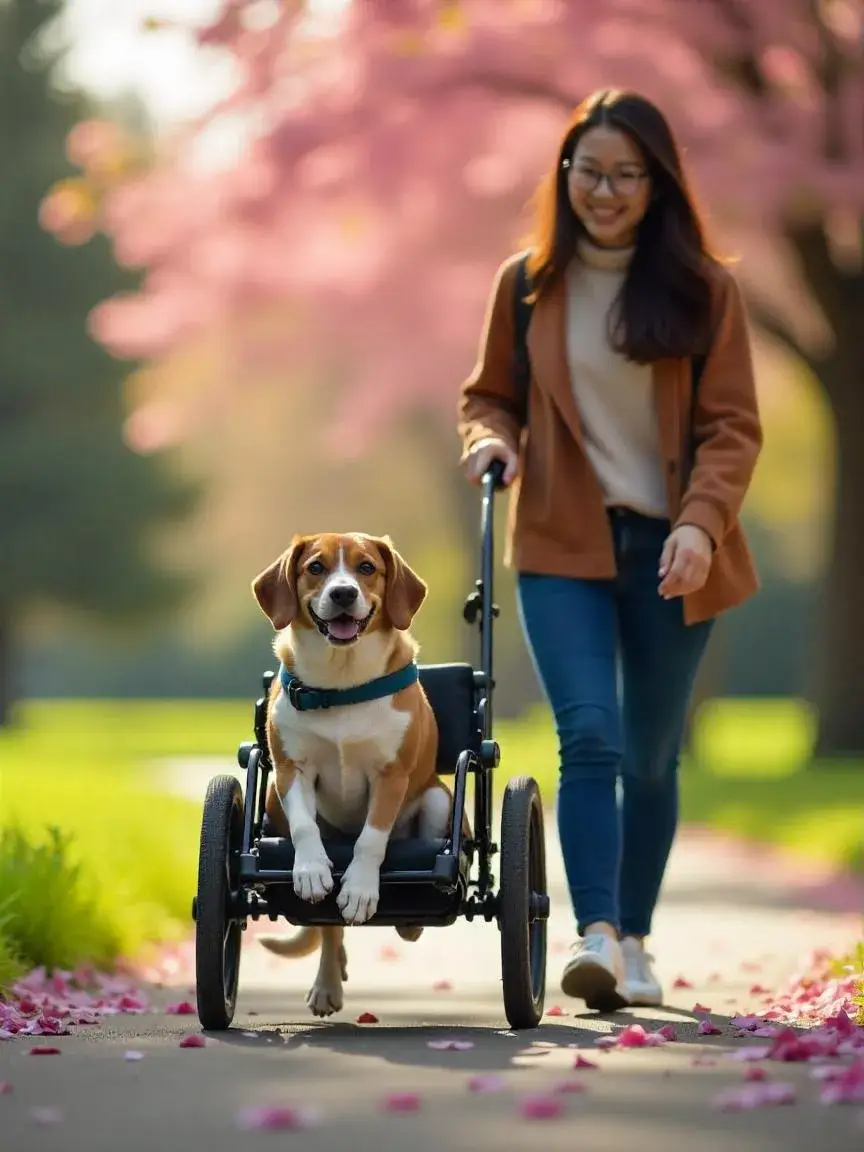Adopting a dog with special needs is a deeply rewarding experience that combines compassion, patience, and commitment. These dogs—whether dealing with physical limitations, chronic medical issues, or emotional trauma—are often overlooked in shelters, but they have just as much love, loyalty, and joy to give as any other pet.
In this guide, we will explore the various aspects of adopting and caring for a special needs dog, from understanding their conditions to preparing your home, creating a routine, training techniques, and long-term care strategies.
Why Choose to Adopt a Dog with Special Needs?
Adopting a special needs dog is not just about giving them a second chance—it’s about forming a unique bond that often surpasses the typical pet-owner relationship. These dogs are often survivors of abandonment, illness, or trauma, and they thrive in a stable and loving environment.
1. You’re Giving a Life-Saving Opportunity
Shelters are often overcrowded, and dogs with special needs are sadly among the first to be euthanized or spend extended periods waiting for adoption. By choosing one of these dogs, you are literally saving a life.
2. They Offer Deep, Unwavering Loyalty
Dogs that have been through hardship often show an extraordinary attachment to their caregivers. The trust and love you build with them is profound and deeply moving.
3. They Teach Compassion and Perspective
Caring for a differently-abled animal can change your outlook on life. It brings out empathy, patience, and resilience—qualities that benefit you in many areas of life.
Types of Special Needs in Dogs
Before adopting, it’s essential to understand the different types of special needs dogs may have. This allows you to make an informed decision and ensure you’re prepared for their specific requirements.
Physical Disabilities
Dogs with physical disabilities might be missing limbs, have mobility impairments, or conditions such as arthritis or hip dysplasia. These dogs may need wheelchairs, ramps, or assistance with stairs and movement.
Sensory Impairments
Dogs who are blind or deaf need a secure environment and may require alternative communication methods. For example, you can use hand signals for deaf dogs or tactile cues for blind ones.
Chronic Medical Conditions
Some dogs require regular medication and monitoring due to chronic conditions like:
- Diabetes
- Heart disease
- Epilepsy
- Kidney issues
- Food allergies
These dogs often require a structured lifestyle and reliable access to veterinary care.
Behavioral and Emotional Trauma
Many dogs have been neglected, abused, or abandoned. This trauma can manifest as anxiety, fear, aggression, or compulsive behaviors. With time, training, and stability, most of these behaviors can improve or even disappear.
How to Prepare Your Home for a Special Needs Dog

Proper home preparation is essential to ensure safety and comfort for your new pet.
1. Create an Accessible Environment
Depending on the dog’s disability, consider adding the following:
- Ramps or small steps for easier movement
- Non-slip rugs or floor mats
- Orthopedic beds with easy access
- Barrier gates to block off dangerous or hard-to-navigate areas
2. Make the Home Safe for Blind or Deaf Dogs
For blind dogs, avoid rearranging furniture often and pad sharp edges. Use scents or textured surfaces to help them navigate.
For deaf dogs, flashing lights or vibrations can be used as signals. Keep the environment calm and avoid startling them.
3. Designate a Recovery or Safe Zone
Dogs with medical or emotional issues benefit from having a quiet, cozy space where they can feel secure. This space should be away from loud noises and foot traffic.
Essential Supplies for Special Needs Dogs
Having the right supplies can significantly improve your dog’s quality of life.
For Mobility Challenges
- Dog wheelchairs or carts
- Harnesses or slings for support
- Booties for paw protection
For Chronic Health Conditions
- Daily medication with pill dispensers
- Food tailored for specific health needs (e.g., renal, diabetic diets)
- Feeding platforms or raised bowls
For Behavioral Needs
- Calming pheromone diffusers
- Puzzle toys and interactive feeders
- Weighted blankets or calming shirts
Choosing the Right Veterinarian
Not all vets have the same experience with special needs animals. Choose a vet who:
- Has experience with your dog’s specific condition
- Is patient and communicative
- Offers flexible scheduling for emergencies or regular visits
You may also need to work with veterinary specialists such as neurologists, orthopedic surgeons, or canine behaviorists.
Training and Socialization for Special Needs Dogs
Training a special needs dog requires patience, understanding, and consistency.
1. Use Positive Reinforcement
Positive reinforcement is the most effective training method for dogs with trauma or anxiety. Avoid punishment, which can worsen fear-based behaviors.
2. Adapt Training to Their Needs
For deaf dogs, use visual signals. For blind dogs, use verbal commands or physical cues. For dogs with anxiety, use slow introductions and calm environments.
3. Socialize Slowly and Safely
Introduce your dog to other pets, children, and new environments at a comfortable pace. Always supervise these interactions and create positive associations.
Daily Routine and Emotional Well-being
Consistency is crucial when caring for a special needs dog.
1. Establish a Predictable Routine
Feedings, walks, and medications should happen at the same time each day. Routine reduces anxiety and helps dogs feel secure.
2. Monitor Health and Behavior
Keep a daily log of any symptoms, reactions to medication, appetite, energy levels, and behavior changes. This can help spot medical issues early.
3. Provide Mental Stimulation
Dogs with limited mobility still need mental enrichment. Use scent games, treat puzzles, or supervised time outdoors to keep their minds active.
Integrating a Special Needs Dog into the Family
Educate All Family Members
Ensure everyone, especially children, understands the dog’s needs. Teach gentle handling, calm speech, and boundaries.
Assign Responsibilities
Involve all family members in caregiving tasks such as feeding, walking, grooming, or administering medication.
Prepare Emotionally for Challenges
There may be difficult days involving vet visits, medication reactions, or behavioral setbacks. Emotional resilience and open communication are key.
Financial Planning for Special Needs Dogs
Caring for a special needs dog can be more expensive than caring for a healthy dog. Plan ahead to avoid financial strain.
- Budget for regular and emergency vet visits
- Purchase pet insurance if possible
- Explore discount programs or nonprofit assistance
- Keep a savings fund for unexpected medical needs
When to Say Yes (Or No) to Adopting a Special Needs Dog
Before adopting, ask yourself:
- Do I have the time to meet the dog’s needs daily?
- Can I afford veterinary care and medications?
- Is my home environment suitable?
- Am I emotionally ready for the responsibility?
If you’re unsure, consider fostering a special needs dog first. This gives you and the dog a trial period before making a permanent commitment.
Inspiring Real-Life Stories
From blind dogs who learn to navigate using scent markers to three-legged rescues who become local heroes, there are countless stories of resilience and love. Many of these dogs end up becoming therapy pets, social media stars, or simply the most loyal companions their owners have ever had.
A Journey Worth Taking
Adopting a special needs dog is not for everyone, but for those who are ready, it can be one of the most enriching decisions of their lives. These dogs have incredible love to give and can thrive with the right care, environment, and compassion. The bond you form with them will be unforgettable, and the life you save will, in turn, change yours forever.


